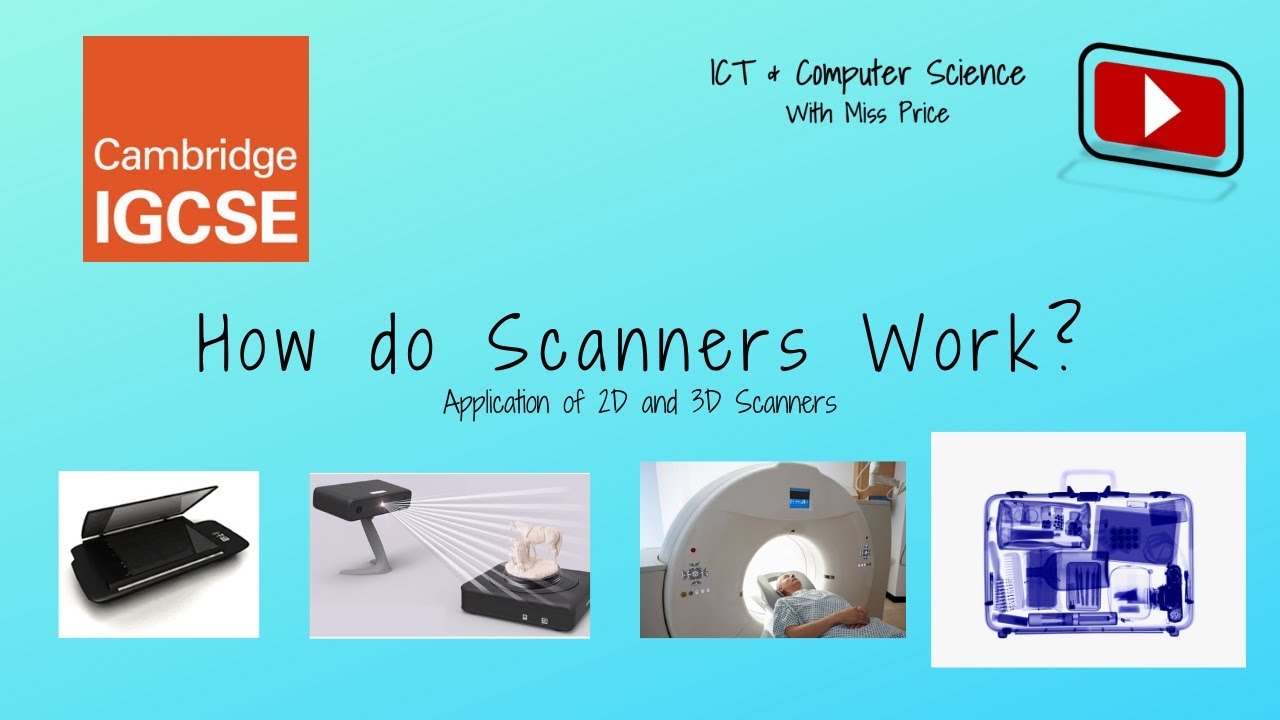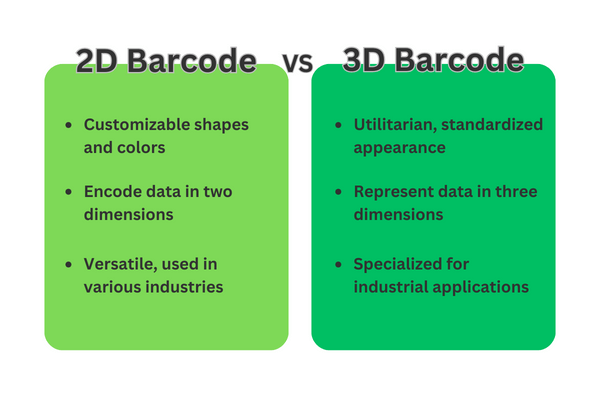Bridging the Gap: Understanding the Differences Between 2d And 3D Scanners
Introduction
In the ever-evolving world of technology, understanding the tools at your disposal can be a daunting task. One common source of confusion is the difference between 2D and 3D scanners. But fear not, this comprehensive guide is here to highlight the crucial disparities between these two types of scanners, their applications and factors to consider when choosing between the two. By the end, you will be well-equipped to make an informed decision on which scanner works best for your needs.
What Is Scanning Technology?
Scanning technology is a broad domain, defined by its ability to analyze physical objects and convert various data attributes into digital forms. The nuts and bolts of scanned data can take on different forms, including 3D models, text recognition, and quality assessment.
- Physical-Digital Transformation: Scanning technology is the bedrock of bridging the physical and digital world. The technology facilitates the conversion of real-world objects into digital counterparts, paving the way for limitless possibilities.
- Types of Scanners: The broad scanning technology umbrella serves multiple types of scanners. The most common examples are 2D scanners widely used for document scanning and barcodes, and 3D scanners employed in fields such as archaeology, medicine, and multimedia industries.
- Applications: Today, scanning technology is an integral part of many industry niches. From healthcare and multimedia to industrial inspections, scanning technology is pivotal in today's digital-first society.
All in all, scanning technology is a broad domain in the tech industry, with various applications and types of scanners available. It showcases the power of digital transformation, pushing the limits of technology to bring physical objects into the digital world.
How Do 2D Scanners Work and What Are Their Applications?
With technological advancements, 2D scanners have made scanning simpler, faster, and cost-effective. Here's how they work and are applied in various scenarios:
Functionality of 2D Scanners:
2D scanners operate through a reflection principle. They project a beam of light onto an object and capture the reflected light with a photoelectric cell, a light-sensitive diode. The contrast of light and dark areas from the object creates an electronic signal, which is then translated into a two-dimensional digital image. Hence, it's a quick and simple scanning process primarily used for capturing surface data.
Applications of 2D Scanners:
1. Barcode Scanning: 2D scanners are ubiquitous for scanning barcodes in retail stores and tracking inventory. Their quick, efficient scanning process makes them ideal for this application.

2. Document Management: Businesses use 2D scanners for digitizing documents for ease of storage, retrieval, and distribution. They are instrumental in transforming physical documents into a digital format, promoting an organized and paperless environment.
3. Archiving: Archiving historical documents, photos, and other important documents often utilize 2D scanners. They help preserve the original detail and information without any damage to the original artifact.
Advantages of 2D Scanners:
- Cost-effectiveness: 2D scanners are generally more affordable compared to 3D scanners, making them a popular choice for businesses and individuals alike.
- Speed: Since 2D scanners function by simply reflecting a light beam, they can capture an image quickly. This speed is beneficial in industries requiring rapid data processing, like retail.
- Easy Operation: Operating a 2D scanner requires minimal technical knowledge, adding to its appeal for various industries and applications.
In conclusion, 2D scanners, with their quick, easy operation, and cost-effectiveness, present an efficient solution for numerous applications across different industries. Whether it's for barcode scanning, document management, or archiving, their contributions are monumental.
How Do 3D Scanners Work Differently and What Are Their Applications?
Unveiling the mechanics and application areas of 3D scanners involves journeying deeper into the realm of advanced technologies. Unlike their 2D counterparts, 3D scanners create a broader spectrum of output, enabling more precise and detailed visual representation.
Functioning of 3D Scanners
3D scanners generate multi-layered pictures of objects by adopting a different methodology. Here's a step-by-step bullet-point explanation of how they work:
1. Capture: The 3D scanner captures numerous images, or 'slices', of the target object. Various technologies like photogrammetry, structured light, or laser-based techniques enable this process.
2. Reconstruct: The scanner then employs an algorithmic process called stitching, which aggregates the captured images to formulate a 3D model. The model holds detailed information about the object's structure, dimensions, and appearance.
3. Refine: Further refinement and post-processing might be necessary to get rid of any 'noise' and perfect the 3D model accurately.
The complexity and detailed nature of this procedure invoke time-intensive operations and higher costs. However, the level of detail it offers is unmatched.

Applications of 3D Scanning
3D scanning technology has found its footing in multiple industries, and its usage varies widely. Some key sectors where you'll find 3D scanners in action include:
- Archaeology: They're utilized to build precise 3D models of ancient artifacts, aiding in study and sharing of knowledge without risking the original pieces.
- Animation and Gaming Industry: By creating detailed 3D models, 3D scanners have become essential in CGI (computer-generated imagery) production.
- Medical Field: 3D scanners play a significant role in generating accurate models of the human body parts for analysis, creating prosthetics, and planning surgeries.
- Reverse Engineering: They’re used to breakdown and study the designs of existing products for remaking or improving them.
In conclusion, 3D scanners provide a level of detail, accuracy, and depth not possible with 2D scanners. However, using them necessitates a better understanding of their operations, higher budget considerations, and managing a more time-intensive process.
What Are the Key Differences Between 2D and 3D Scanners?
In comprehending the critical distinctions between 2D and 3D scanners, it's helpful to underscore the crucial aspects defining their operation and output. Here's a concise breakdown of some principal differences:
* Output nature:
- 2D Scanners: Produce 'flat' digital images.
- 3D Scanners: Generate full, detailed 3D models.
* Process complexity:
- 2D Scanners: Simple process that involves light reflection and detection, producing an electronic signal. Fast and straightforward.
- 3D Scanners: More complex, involving capturing, reconstructing, and refining multiple 2D 'slices' via processes like laser scanning, structured light, or photogrammetry.
* Cost:
- 2D Scanners: Generally less expensive due to their simpler technology and operational ease.
- 3D Scanners: More costly due to their intricate processes, advanced technologies, and higher detail offering.
* Detail level:
- 2D Scanners: Provide high-resolution images but lacks depth and three-dimensional detail.
- 3D Scanners: Capture comprehensive details from multiple angles, offering depth and intricate element capturing.
Appreciating these differences can influence your purchasing decisions. For instance, if your work requires intricate detailing and depth, a 3D scanner might serve you better. However, if you prioritize speed, cost-effectiveness, and operation ease and your work doesn't demand intricate detailing, a 2D scanner could be a better choice. It all depends on your specific needs, application, and resources.
What Factors Should You Consider When Choosing Between 2D and 3D Scanners?
When evaluating options between 2D and 3D scanning technology, there are several fundamental factors that you must take into consideration. These factors will guide you to make an informed decision that best fits your scanning requirements.
1. Intended Purpose: Consider the scope and nature of your project. Do you need to create detailed 3D models, or will a flat image suffice? For instance, 3D scanners are invaluable in areas like reverse engineering or creating animations, while 2D scanners are ideal for document scanning.
2. Budget Constraints: 2D scanners are less expensive when compared to 3D scanners. If budget is a stringent factor, you may want to lean towards a 2D scanner.
3. Detail and Accuracy: If a high level of precision and detail is a priority, 3D scanners are typically the preferable choice. However, for less intricate work, a 2D scanner will suffice.
4. Time: 3D scanning is more time-consuming due to its complex process of capturing, reconstructing, and refining data. If speed is crucial for your project, a 2D scanner may be more beneficial.
5. Ease of Use & Software Compatibility: 2D scanners are typically easier to operate. However, you should also consider the compatibility of the scanner with your existing software systems, as this can impact ease of use and efficiency.
In summary, choosing between a 2D and 3D scanner will significantly depend on your project requirements, available budget, desired detail level and time allocation. The decision should correspond with your scanning needs, balancing cost-effectiveness and operational simplicity with the degree of precision needed.
Conclusion
Understanding the differences between 2D and 3D scanners can significantly influence the efficiency and effectiveness of your work. By analyzing their working principles, applications, and differences, you can make a better-informed decision to meet your scanning needs. Ultimately, your choice should align with your project requirements, budget, and the level of detail necessary.
Related FAQs about what is the difference between 2d and 3d scanners
What are the key advantages and disadvantages of using 2D scanners?
2D scanners advantage includes cost-effectiveness, speed, and easy operation, making them ideal for tasks like barcode scanning and document digitization. The primary disadvantage is they cannot capture three-dimensional details, limiting their application to surface data only.
How does the cost and efficiency of 3D scanners compare with 2D scanners?
3D scanners are generally more expensive than 2D scanners due to their advanced technologies and complex processes. While 2D scanners offer efficient and quick scanning, 3D scanners provide detailed and precise scans, making them more effective in projects requiring detail and depth.
In what scenarios would you use a 3D scanner over a 2D scanner and vice versa?
You would use a 3D scanner in situations requiring detailed three-dimensional models, like archaeology, medical imaging, or animation. Conversely, 2D scanners are ideal where quick, cost-effective surface scans are sufficient, such as barcode scanning or document digitization.


